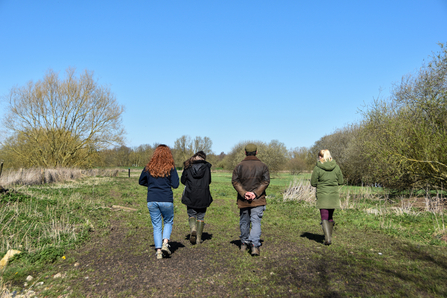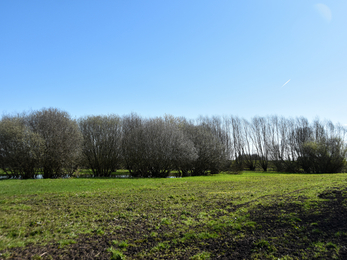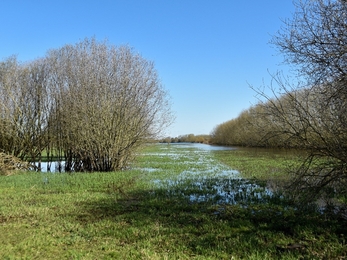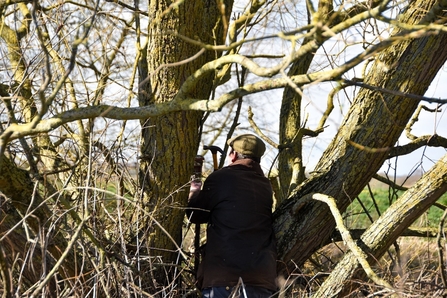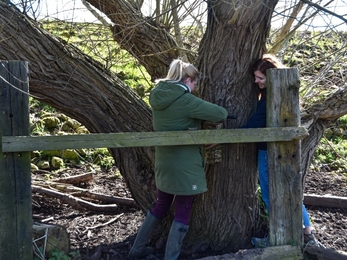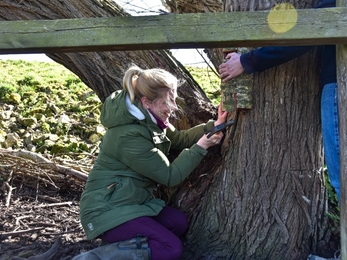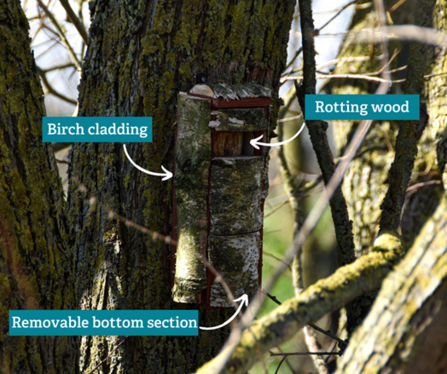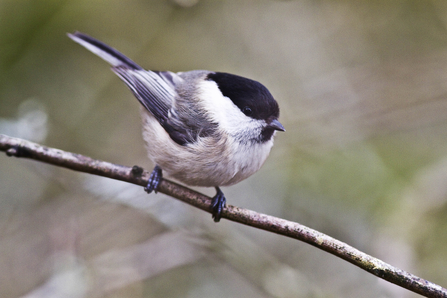Willow tits are a special bird in the tit family, as they are unusual in their nesting techniques. They excavate their own holes in standing deadwood, a rare habitat, making suitable nesting sites scarce. They will not use traditional nest boxes like many other species, meaning a little bit more work must be put into helping them out! Join me on a trip to Pollybell farm, where I take you through the steps we are taking to give these endangered little birds a helping hand…
We drove through Pollybell, a family-owned organic farm, which Nottinghamshire Wildlife Trust has worked closely with for approximately 20 years. There are two Sites of Special Scientific Interest (SSSI) on-site, and the farm is home to over 185 species of bird with many being endangered or at risk. I was pleasantly surprised by the vast range of wildlife I saw in such a short space of time! In the 5-minute drive through the farm, we spotted a sparrowhawk sitting on a telephone wire, a group of roe deer on the edge of a woodland, a kingfisher in the ditches, and a hare hopping along a field. The air was fresh and full of bees.


